The 10 Hottest Google Cloud Tools Of 2022 (So Far)
From a new Kubernetes cost estimator and HPC toolkit to new API and SAP integrations, here are the 10 hottest Google Cloud tools and products launched in 2022 so far.
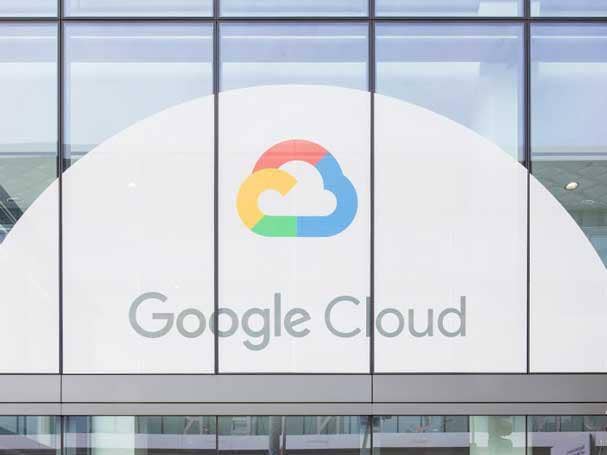
Ten Cool Google Cloud Products And Tools Launched In 2022
The red-hot cloud computing giant has been on an innovation tear in 2022, launching a slew of new tools and products to help customers better leverage Google Cloud—from a new Kubernetes cost estimator to a high-performance computing (HPC) toolkit.
Google Cloud is looking to leapfrog its cloud competitors over the next few years, in part, by consistently creating new features, services and tools for customers and channel partners to leverage.
During its most recent first quarter, Google Cloud sales soared 44 percent year over year to more than $5.82 billion. The Mountain View, Calif.-based company now has an annualized revenue run rate of roughly $22.2 billion.
In a recent interview with CRN, Google Cloud CEO Thomas Kurian said he’s bullish about his company’s future thanks to its investments and market momentum in cybersecurity, the Google Cloud Marketplace and channel partner community.
“We are seeing really unprecedented demand from customers, and our partners are critical to meeting this demand,” Kurian told CRN.
[Related: Google Cloud Channel Chief: 8 Huge Partner Initiatives In 2022]
“Our backlog of signed, non-cancellable contracts is $50 billion-plus. So that’s a very large number. And all those contracts that have been booked also bring partners in because partners need to drive the commitment that a customer has given us in that contract backlog,” said Kurian. “So there’s a huge, huge opportunity for partners.”
Google Cloud has consistently launched new innovations this year aimed at boosting data analytics capabilities, cloud cost transparency, manufacturing use cases and its Google Distributed Cloud portfolio.
Here are 10 of the hottest new Google Cloud products, features and tools launched in 2022 that you need to know about:
* Google Workspace SAP Integrations
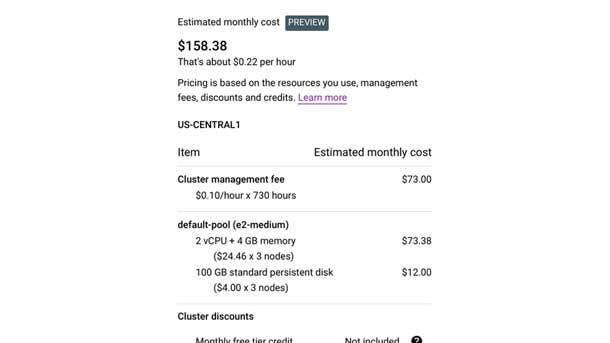
Google Kubernetes Engine Cost Estimator
The new Google Kubernetes Engine (GKE) cost estimator allows customers to see what it will cost to run a particular GKE cluster.
The new cost estimator tool shows how various configurations and feature choices affect costs, as well as what the potential of autoscaling might be on a client’s bill.
The GKE cost estimator is now seamlessly integrated into the Google Cloud console. The GKE estimator is part of the GKE cluster creation flow, and surfaces a number of variables that can affect a customer’s compute running costs by allowing people to see the breakdown of costs between management fees, individual node pools, licenses and more.
Google Cloud said the new tool is part of its commitment to making Google Cloud the most cost-effective cloud by offering leading price performance and customer-friendly licensing, as well as also predictable and transparent pricing.
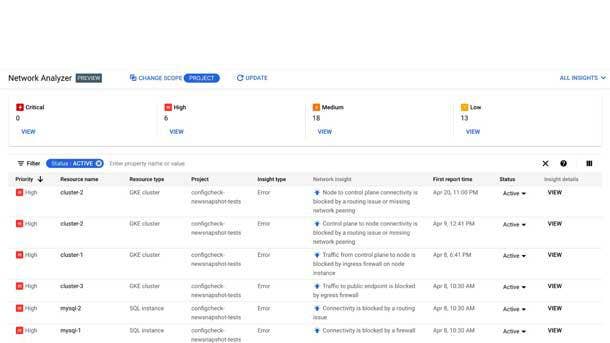
Google Cloud’s Network Analyzer
Google Cloud said its networking group developed a solution to prevent manual, time-intensive, reactive status quo with the launch of its Network Analyzer.
The new module allows customers to transform reactive workflows into proactive processes and reduce network and service downtime. The Network Analyzer detects failures that can be caused by misconfigurations like setup errors or regressions caused by unintended changes.
Google Cloud’s Network Analyzer empowers businesses by auto-detecting failures caused by the underlying network and suggests best practices to improve the availability, performance, and security of services. It also detects the root cause for this failure, such as an invalid route or firewall rule blocking the service reachability.
The Network Analyzer offers an out-of-the-box suite of always-on analyzers that continuously monitor Google Compute Engine (GCE) and Google Kubernetes Engine (GKE) network configuration. These analyzers run in the background, monitoring network services like load balancers, hybrid connectivity, and connectivity to Google services like Cloud SQL.
As users continually push out configuration changes or the metrics for their deployment changes, the relevant analyzers will automatically surface failure conditions or suboptimal configurations.
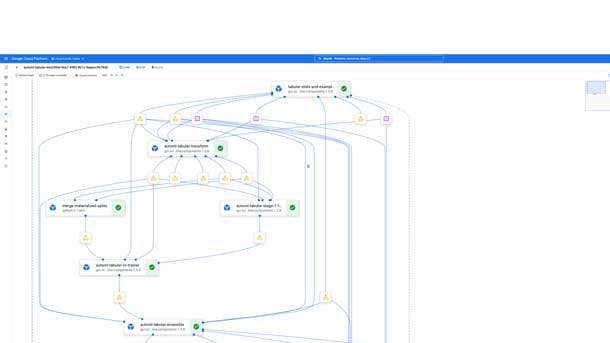
Google’s Vertex AI Tabular Workflows
The new Vertex AI Tabular Workflows tool includes a glassbox and managed AutoML pipeline that lets users see and interpret each step in the AI model building and deployment process.
Google Cloud’s Vertex AI is a collection of cloud services for creating AI models. The new Vertex AI Tabular Workflows lets customers train datasets of over a terabyte, without sacrificing accuracy, by picking and choosing which parts of the process users want AutoML to handle versus which parts users want to engineer themselves.
The new tool can be used to build neural networks that process tabular data, or data organized into rows and columns. Google said a sizable portion of companies’ business information is stored in rows and columns.
Certain elements of Tabular Workflows can also be integrated into a customers’ existing Vertex AI pipelines. Google has added new managed algorithms including advanced research models like TabNet, new algorithms for feature selection and model distillation.
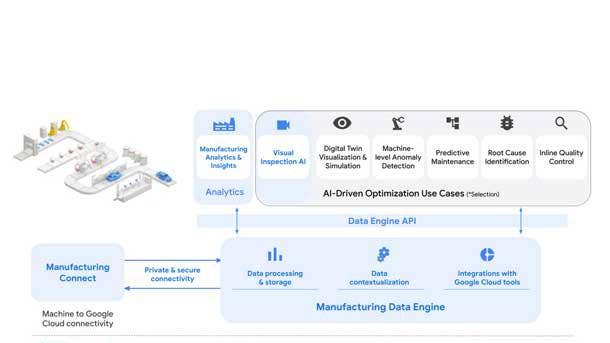
Manufacturing Data Engine
The new Manufacturing Data Engine is an end-to-end solution that processes, contextualizes, and stores factory data on Google Cloud’s market leading data platform.
The Manufacturing Data Engine provides a configurable and customizable blueprint for the ingestion, transformation, storage, and access to factory data.
It integrates key Google Cloud products—including Cloud Dataflow, PubSub, BigQuery, Cloud Storage, Looker, Vertex AI, Apigee, and more—into a manufacturing-specific solution.
The solution enables manufacturers to connect historically siloed assets, process and standardize data, and improve visibility from the factory floor to the cloud. Once data is harmonized, the solution enables three AI- and analytics-based use cases: manufacturing analytics and insights; predictive maintenance; and machine-level anomaly detection.
The goal is to help manufacturers unify their data and empower their workforce with easy-to-use analytics and AI solutions based on cloud infrastructure.
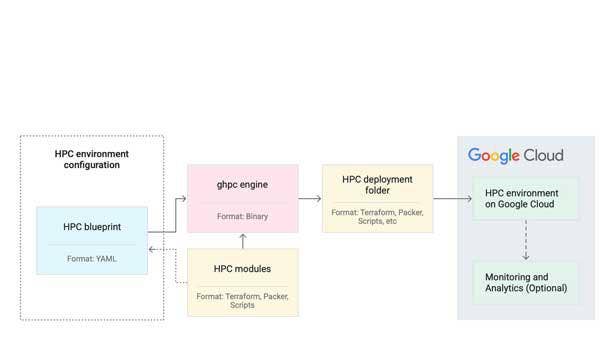
HPC Toolkit
The new Cloud HPC Toolkit is the next step in high-performance computing (HPC) on Google Cloud.
The new open-source tool enables users to easily create repeatable, turnkey HPC clusters based on proven best practices.
The HPC Toolkit features a modular design that enables composable HPC environments. This allows it to easily define and deploy both simple and advanced HPC solutions.
An HPC blueprint defines the infrastructure and software configuration of an HPC environment via a high-level YAML-formatted file that composes Terraform modules, Packer templates, and Ansible playbooks. Customers can create a cluster with an existing blueprint or modify it to fit their needs. Through a few text lines in the blueprint, organizations can easily modify the configuration to provision the required infrastructure and industry-specific tools required.
The HPC Toolkit comes with several example configuration blueprints, including a small basic cluster and a high I/O cluster. These can be used as-is to get familiar with the operations of the HPC Toolkit, or it can be modified to build different configurations.
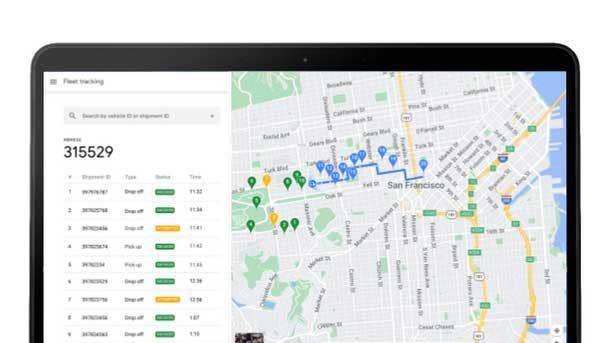
Cloud Fleet Routing API
Google Cloud recently launched its Cloud Fleet Routing API which focuses on the route planning phase of delivery and allows operators to perform advanced fleet-wide optimization. This allows them to determine the allocation of packages to delivery vans and the sequencing of the delivery tasks.
Natively integrated with Google Maps routes data, the new Cloud Fleet Routing API can solve simple route planning requests in near-real-time, and scale to the most demanding of workloads with parallelized request batching. Customers can specify a variety of constraints, such as time windows, package weights, and vehicle capacities.
The Cloud Fleet Routing API also helps carriers meet sustainability targets by reducing distance traveled, number of delivery vans, and CO2 output from cloud computing.

New Google Workspace SAP Integration Tool
Google Cloud created new integrations between its Workspace solution and SAP’s cloud ERP, SAP S/4HANA Cloud to allow customers to connect core SAP software with the collaborative capabilities of Google Docs and Google Sheets.
The ultimate goal of SAP and Google Cloud here is to innovate how work gets done across the enterprise.
Customers benefits include the ability to export and import data between SAP software and Google Docs and Google Sheets for instant access to real-time editing and simultaneous collaborative engagements on documents and spreadsheets. Google said customers also get a clean data source due to the one-step integration, which enables version control and removes layers of potential translation when sharing application data and documents.
Google Workspace brings together the apps loved by billions of people — Gmail, Chat, Calendar, Docs, Sheets, Meet and more — into a single integrated workspace. With Google Docs and Google Sheets integrated with the SAP S/4HANA Cloud, customers get new business capabilities, use cases, and opportunities for collaborative tasks within small and large organizations alike.
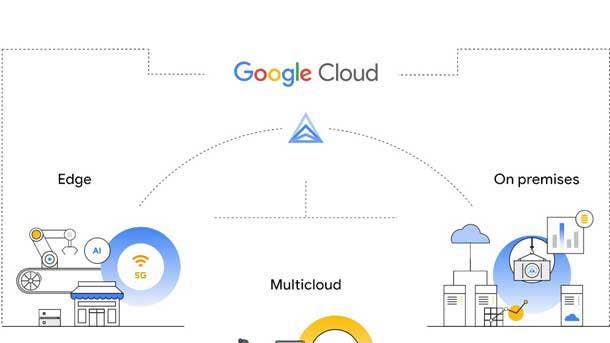
Google Distributed Cloud Virtual
In 2021, Google Cloud launched its Google Distributed Cloud (GDC) portfolio of hardware, software, and services that bring its cloud infrastructure to the edge and into customer data centers.
The company recently unveiled the new Google Distributed Cloud Virtual—a software and service solution that brings Google’s existing Anthos on-premise for VMware vSphere and Anthos bare metal services into the GDC portfolio.
Cloud-managed and deployed onto a client’s infrastructure, GDC Virtual provides a software only extension of Google Cloud, allowing customers to automate provisioning and management of GKE clusters on VMs and existing bare metal infrastructure with the correct requirements and form factors and use the Google Cloud Console to provision Anthos clusters on vSphere.
The new GDC Virtual enables developers to build and deploy container-based workloads to Kubernetes directly or an application runtime. GDC Virtual customers can also apply federated security, access control, and identity management across cloud and on-premises clusters.
Customers of Anthos on-premises, now known as GDC Virtual, will receive the same consistent management and developer experience with no changes to current capabilities or pricing structures.
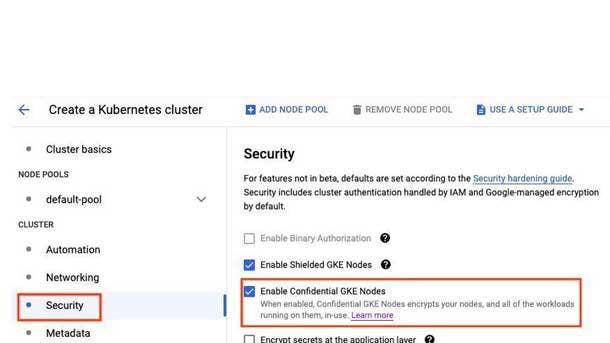
Confidential GKE Nodes
Google this year launched the general availability of Confidential GKE Nodes which leverage hardware to make sure data is encrypted in memory.
To help increase security of GKE clusters, Google launched the Confidential GKE Nodes that enables encryption in-use for data processed inside a GKE cluster, without significant performance degradation.
Confidential GKE Nodes are built on the same technology foundation as Confidential VM and utilize AMD Secure Encrypted Virtualization. This feature allows customers to keep data encrypted in memory with node-specific, dedicated keys that are generated and managed by the processor.
Confidential GKE Nodes also leverage Shielded GKE nodes to offer additional protection against rootkit and bootkits, helping to ensure the integrity of the operating system running on the Confidential GKE Nodes
The Confidential GKE Nodes can be enabled as a cluster-level security setting or a node pool-level security setting. When enabled at the cluster level, the solution enforces the use of Confidential VMs on all worker nodes.

Manufacturing Connect
Google Cloud’s new Manufacturing Connect is a factory edge platform co-developed with Litmus Automation that quickly connects to, and streams data from nearly any manufacturing asset and industrial system to Google Cloud. This new solution is based on an extensive library of more than 250 machine protocols.
Deep integration with the Manufacturing Data Engine unlocks rapid data intake into Google Cloud for processing machine and sensor data. The ability to deploy containerized applications and ML models to the edge enables new dimensions of use cases, Google Cloud said.
Once data is centralized and harmonized, it can then be used to address a growing set of industry-specific use cases, including machine-level anomaly detection, which helps manufacturers identify anomalies as they occur and provides alerts—by leveraging Google Cloud’s Time Series Insights API—on real-time machine and sensor data such as noise, vibration, or temperature.
When Manufacturing Connect is integrated with the Manufacturing Data Engine, engineers and plant managers can automatically set up new machines and factories, enabling standardized dashboards, KPIs, and on-demand insights into the data to uncover new opportunities throughout the factory.